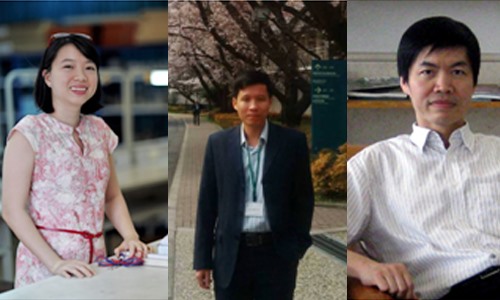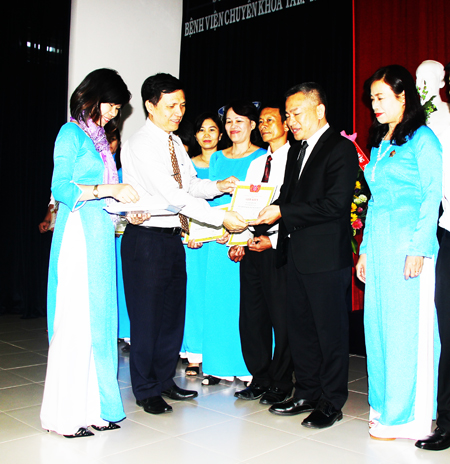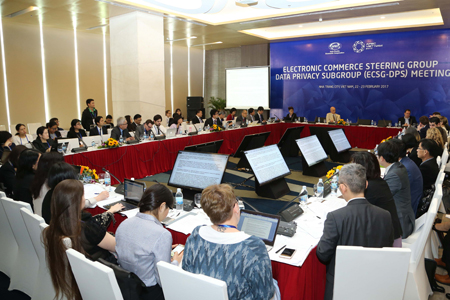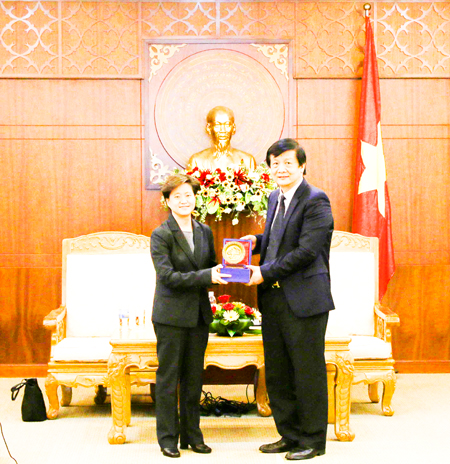
Three scientists have made a breakthrough in Vietnamese physical history with their work published in Physical Review Letters, one the most prestigious journals in the field of physics. Among the three authors is a lecturer at Khanh Hoa University...
Three scientists have made a breakthrough in Vietnamese physical history with their work published in Physical Review Letters, one the most prestigious journals in the field of physics. Among the three authors is a lecturer at Khanh Hoa University.
 |
| MA. Le Thi Quynh Huong, Associate Professor, PhD Nguyen Quang Hung; and D.Sc. Nguyen Dinh Dang (from left). |
The study, entitled “Simultaneous microscopic description of nuclear level density and radiative strength function” was published in Physical Review Letters on January 9.
The three scientists include two working in Vietnam and one in Japan. They are Associate Professor, PhD Nguyen Quang Hung, Duy Tan University, Da Nang; PhD candidate Le Thi Quynh Huong, University of Khanh Hoa, Nha Trang City, and D.Sc. Nguyen Dinh Dang, RIKEN Institution, Japan.
“This is my fifth work that published in the journal, but this is the first time that all three authors of a nuclear physics study are Vietnamese people.” Nguyen Dinh Dang says, adding that this is a breakthrough that nuclear physics researchers have made.
The study was sent to Physical Review Letters on September 13, 2016. It passed three rounds of reviews from leading experts in the field and it satisfies the 2nd criteria namely “Solving or making essential steps towards solving, a critical outstanding problem”. The most difficult step is writing the draft. To be accepted, the papers must not exceed 3,750 words but it still reflects the full content of the study, according to Nguyen Quang Hung. “It took us 90 days to finish the first draft of the article,” Hưng adds.
Physical Review Letters is a journal one of the most prestigious scientific journals in the field of physics. It maintains strict acceptance criteria. Published letters must meet criteria of impact, innovation and interest by doing at least one of the following: Opening a new area of research, or new avenues of research within an established area, and therefore significantly influencing the research of others; Solving or making essential steps towards solving, a critical outstanding problem; and presenting a new technique or methodology which plays a pivotal role in future physics research and makes immediate consequences apparent for physicists.
T.A
Translated by N.T










